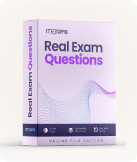Salesforce Certified Tableau CRM and Einstein Discovery Consultant - Certified Tableau CRM and Einstein Discovery Consultant Exam
Page: 1 / 25
Total 122 questions
Question #1 (Topic: Single Topic)
A Tableau CRM consultant has been asked to refactor a dashboard so that it loads more quickly. After some analysis, the consultant found that most of the
dashboard queries run in less than five seconds; however, the Opportunities Table takes 30 seconds to run.
How can the consultant improve the performance of this dashboard?
dashboard queries run in less than five seconds; however, the Opportunities Table takes 30 seconds to run.
How can the consultant improve the performance of this dashboard?
A. Create a Visualforce page and display a list view of the opportunities on this new page.
B. Create a link to download the list of opportunities as an Excel file.
C. Create a second page on the dashboard and move the table to this new page.
D. Create a second dashboard and move the table to this new dashboard.
Answer: C
Question #2 (Topic: Single Topic)
A company used Tableau CRM to create two datasets:
1. "OpportunityWithAccount" dataset, which contains data from the Opportunity standard object augmented by the Account data.
2. "CaseWithAccount" dataset, which contains data from the Case standard object augmented by the Account data.
The company wants to build a lens showing the total number of Opportunities and Cases per Account.
How can a consultant help them build this lens?
1. "OpportunityWithAccount" dataset, which contains data from the Opportunity standard object augmented by the Account data.
2. "CaseWithAccount" dataset, which contains data from the Case standard object augmented by the Account data.
The company wants to build a lens showing the total number of Opportunities and Cases per Account.
How can a consultant help them build this lens?
A. Use "Compare Table" to join the "OpportunityWithAccount" and "CaseWithAccount" datasets using the "AccountId" and then aggregate by Account.
B. Use a SAQL query to group and join the "OpportunityWithAccount" and "CaseWithAccount" datasets then generate the results.
C. Use a Salesforce Direct query to join "OpportunityWithAccount" and "CaseWithAccount" datasets.
D. Set up Connect Data Sources in the UI between the "OpportunityWithAccount" and "CaseWithAccount" datasets.
Answer: B
Question #3 (Topic: Single Topic)
In a dataset, there are multiple boolean fields. When displayed on any dashboard, the boolean fields should all be displayed in the same way: a value of true
should result in the display of the word "Yes" in green; a value of false should result in the display of the word "No" in red.
In which two ways can this be accomplished?
should result in the display of the word "Yes" in green; a value of false should result in the display of the word "No" in red.
In which two ways can this be accomplished?
A. Create an XMD node in the dataflow to change the label and color of the values in the fields.
B. In the explorer, select the boolean fields and use the "edit values" option on the fields to change values and colors.
C. Download the XMD for the dataset and change the values and color for the fields and then upload to the dataset.
D. In the explorer, select the boolean fields, then create a derived dimension that references the boolean fields, and then modify the values and colors of the derived dimension.
Answer: C
Question #4 (Topic: Single Topic)
A consultant built a very useful Tableau CRM app for Sales Operations, and they want to share its contents with the rest of Global Sales. However, they do not
want to add everyone in Sales to their app. The consultant recommends extending the Sales Operations app and distributing it as a Tableau CRM template app,
but needs to locate specific information to get started.
{
"folderSource" : { "id" : "Sales Operations ID"}
}
Given the code statement above, which endpoint should it be posted to?
want to add everyone in Sales to their app. The consultant recommends extending the Sales Operations app and distributing it as a Tableau CRM template app,
but needs to locate specific information to get started.
{
"folderSource" : { "id" : "Sales Operations ID"}
}
Given the code statement above, which endpoint should it be posted to?
A. /services/data/v##.#/wave/templates
B. /services/data/v##.#/analytics/projects
C. /services/data/v##.#/analytics/wizard
D. /services/data/v##.#/wave/apps
Answer: B
Question #5 (Topic: Single Topic)
Which three statements are true regarding sharing inheritance? (Choose three.)
A. A dataset using sharing must also have a security predicate defined.
B. If a user can see more than 3,000 records on the object in Salesforce, but the user does not have the "View All Data" permission, sharing inheritance is not used. The backup security predicate takes effect. This limitation does not apply to the Opportunity object.
C. When sharing inheritance is enabled, security predicates are ignored.
D. Sharing inheritance supports a foreign key for enforcing security.
E. Sharing inheritance supports Account, Campaign, Case, Contact, Opportunity, Lead, Order, and User. If you use custom objects, you must use security predicates for those.
Answer: ABE
